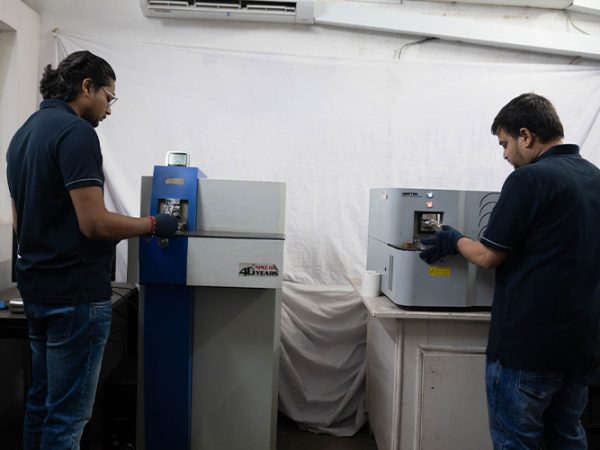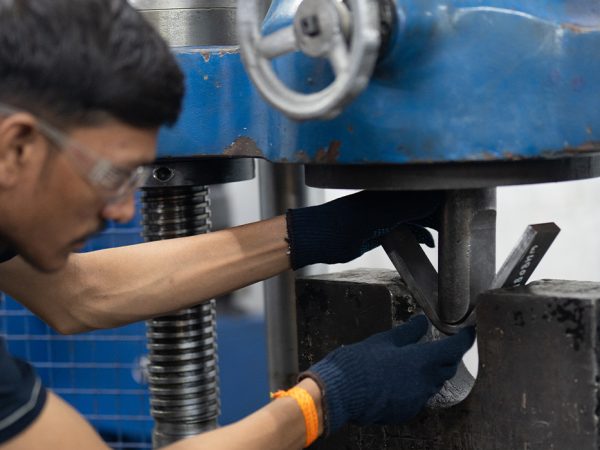Material testing is a crucial process in engineering, manufacturing, and scientific research that ensures materials used in construction, machinery, transportation, and various industries meet the highest standards of quality, safety, and performance. With the rapid advancement of technology, the demand for precise and reliable materials has increased. Material testing plays a vital role in confirming that materials can withstand operational stresses, environmental factors, and long-term wear and tear.
At its core, material testing involves assessing the physical, chemical, and mechanical properties of materials. This evaluation helps manufacturers, engineers, and scientists identify potential issues before a product is deployed, ensuring reliability, durability, and safety. From metals and alloys to polymers and composites, every material requires careful testing to verify its suitability for intended applications.
What is Material Testing?
Material testing is the systematic process of examining materials to determine their properties, behaviors, and performance under specific conditions. The goal is to identify strengths, weaknesses, and potential failure points. Material testing is widely used in industries such as aerospace, automotive, construction, defense, and energy sectors to ensure components are reliable, safe, and compliant with regulatory standards.
The primary purposes of material testing are:
- Quality Assurance: Ensuring that the materials meet predefined standards and specifications.
- Safety: Detecting material defects to prevent failures that could compromise safety.
- Optimization: Selecting the most suitable material for a specific application.
- Cost Reduction: Identifying issues early to avoid costly recalls or replacements.
Material testing is broadly classified into destructive and nondestructive methods. Destructive tests, such as tensile testing or hardness testing, involve applying stress or forces until the material fails. Nondestructive tests (NDT), such as ultrasonic or radiographic testing, allow examination without damaging the material.

Types of Material Testing
Material testing can be categorized based on the type of property being examined. Below, we explore the most common testing types and their significance.
1. Mechanical Testing
Mechanical testing evaluates how a material responds to various forces, loads, and mechanical stress. It provides information about strength, flexibility, toughness, and hardness.
Key Mechanical Tests Include:
- Tensile Testing:
This test measures the ability of a material to withstand a pulling or stretching force. During tensile testing, a specimen is pulled until it breaks. Engineers analyze properties like ultimate tensile strength, yield strength, and elongation. Tensile testing is critical in industries such as aerospace, automotive, and structural engineering, where components must endure significant stresses without failure.
- Hardness Testing:
Hardness testing measures a material’s resistance to surface deformation, indentation, or scratching. Various hardness scales, such as Rockwell, Brinell, and Vickers, are used depending on the material type and application. Hardness testing is vital for selecting materials for wear-resistant applications, tools, and machinery.
- Impact Testing:
Impact tests determine a material’s ability to absorb energy during sudden force or shock. Common tests include the Charpy and Izod impact tests. Impact testing is particularly important for components used in vehicles, bridges, and other structures exposed to sudden loads.
- Compression and Bending Tests:
These tests evaluate how materials react under compression or bending forces, providing insight into their structural behavior.
2. Chemical Testing
Chemical testing analyzes the composition and purity of materials. This type of testing is essential to confirm that the material has the required elements, alloy composition, or chemical properties for its intended use.
Common Chemical Testing Applications Include:
- Alloy Composition Analysis:
Verifying the percentage of elements in metals and alloys ensures the material has the desired mechanical and corrosion properties.
- Contaminant Detection:
Identifying impurities, unwanted elements, or chemical residues that could impact performance.
- Corrosion Resistance Testing:
Chemical testing is often combined with corrosion testing to predict how materials will perform in acidic, basic, or saline environments.
Chemical testing is especially critical in industries like aerospace, oil & gas, pharmaceuticals, and electronics, where material failure due to chemical instability could have catastrophic consequences.
3. Metallurgical Testing
Metallurgical testing focuses on understanding the internal microstructure of metals and alloys. The microstructure directly influences mechanical properties, corrosion resistance, and durability.
Metallurgical Testing Techniques Include:
- Metallography Services:
Metallography involves preparing and examining material samples under a microscope to observe grain structures, phases, inclusions, and defects. This helps identify weaknesses and predict material behavior.
- Phase Identification:
Determining the different phases in metals allows engineers to optimize heat treatment processes and enhance mechanical performance.
- Failure Analysis:
When materials fail unexpectedly, metallurgical testing helps identify the root cause, whether it’s a design flaw, improper manufacturing, or environmental factors.
Metallurgical testing is widely used in automotive, aerospace, defense, and energy industries to ensure structural reliability.
4. Corrosion Testing
Corrosion testing evaluates how materials degrade when exposed to environmental factors like moisture, chemicals, or temperature changes. Corrosion is a common cause of material failure, particularly in metals.
Common Corrosion Testing Methods Include:
- Salt Spray Testing:
Simulates marine or saline environments to assess the corrosion resistance of metals and coatings.
- Electrochemical Testing:
Measures corrosion rates and predicts long-term performance in specific chemical environments.
- Accelerated Aging:
Exposes materials to harsh conditions to observe how they deteriorate over time.
Corrosion testing is essential for industries like maritime, oil & gas, construction, and infrastructure, where material longevity is crucial.
5. Nondestructive Testing (NDT)
Nondestructive testing evaluates materials without causing damage, making it ideal for inspecting finished products or critical components in service. NDT helps detect flaws, cracks, and structural weaknesses without compromising functionality.
Popular NDT Methods Include:
- Ultrasonic Testing (UT):
Uses high-frequency sound waves to detect internal flaws in metals, composites, and welds.
- Radiographic Testing (RT):
X-rays or gamma rays are used to visualize internal defects like cracks, voids, and inclusions.
- Eddy Current Testing:
Detects surface and near-surface defects using electromagnetic induction.
- Magnetic Particle Testing (MT):
Detects surface cracks in ferromagnetic materials by applying magnetic fields and iron particles.
Nondestructive testing is critical in aerospace, power generation, pipelines, and automotive industries to ensure safety without destroying the component.
Why Material Testing is Important
Material testing is not just a regulatory requirement; it is an essential practice for maintaining safety, performance, and reliability. The benefits include:
- Safety: Prevents catastrophic failures by ensuring materials can withstand operational stresses.
- Compliance: Helps meet international standards like ASTM, ISO, and ASME.
- Performance Optimization: Selects materials best suited for specific applications.
- Cost Efficiency: Detects issues early, reducing maintenance, replacements, and downtime.
- Innovation: Supports the development of advanced materials with improved properties.
Applications of Material Testing
Material testing is applied in almost every industry, including:
- Aerospace: Ensures components like turbine blades, fuselage parts, and fasteners perform under extreme conditions.
- Automotive: Tests materials for crash safety, durability, and wear resistance.
- Construction: Verifies the strength and reliability of steel, concrete, and composites used in buildings and infrastructure.
- Energy: Ensures materials in turbines, pipelines, and reactors meet operational and safety requirements.
- Manufacturing: Maintains consistent quality and ensures products meet customer expectations.
Challenges in Material Testing
Despite its importance, material testing presents several challenges:
- Complex Materials: Advanced composites, alloys, and polymers require specialized testing techniques.
- High Costs: Sophisticated equipment and highly trained personnel are expensive.
- Time-Consuming: Comprehensive testing can be lengthy, particularly for large-scale components.
- Expertise Required: Interpreting results accurately requires skilled engineers and metallurgists.
Future Trends in Material Testing
The field of material testing is evolving with technology:
- Automation: Robotic systems and AI are improving efficiency and consistency.
- Advanced Imaging: Electron microscopy and 3D imaging allow detailed microstructural analysis.
- Smart Materials: Development of materials capable of self-monitoring and reporting their condition.
- Sustainable Testing: Eco-friendly testing methods reduce environmental impact while maintaining accuracy.
Conclusion
Material testing is indispensable for modern industry, ensuring that materials are reliable, safe, and suited for their intended purpose. Whether it’s tensile testing, hardness testing, chemical testing, corrosion testing, or nondestructive testing, each method plays a critical role in evaluating material performance. Metallurgical testing and metallography services provide deeper insights into microstructures, while mechanical and chemical evaluations ensure structural integrity and safety.
By adopting advanced material testing techniques, industries can minimize failures, reduce costs, and innovate more effectively. In a world where safety and reliability are non-negotiable, comprehensive material testing ensures that every product and component can meet the demands of its environment and application.







